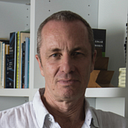Two bodies, not always one gender — the gift of time
In the condition called gender dysphoria, an individual experiences suffering caused by perceiving oneself as a woman in a male body, or perceiving oneself as a man in a female body. The term transgender denotes exactly this situation of gender incongruence experienced by some individuals, which usually generates suffering.
Until a few years ago, it was categorized as a mental disorder. Today it is no longer described as a disorder in diagnostic manuals, to avoid possible stigmatization. However, while this choice is understandable, the word disorder had the advantage of not masking the presence of a conflict at the origin of suffering, which arises from the perception of a gender discordance between two bodies: the physical body and the psychic body. The causes of this discordance, between the objective gender of the physical body and the subjective gender of the psychic body, are to this day a matter of debate and remain essentially unknown.
It is important to note that these two bodies, whose genders are discordant, have different plasticities. The physical body can certainly be modified in its structure, through physical activity and nutrition, but it is not possible to alter its physiological functions, which depend on biological laws that do not bend to our desires. This, of course, does not mean that it is not possible to…
